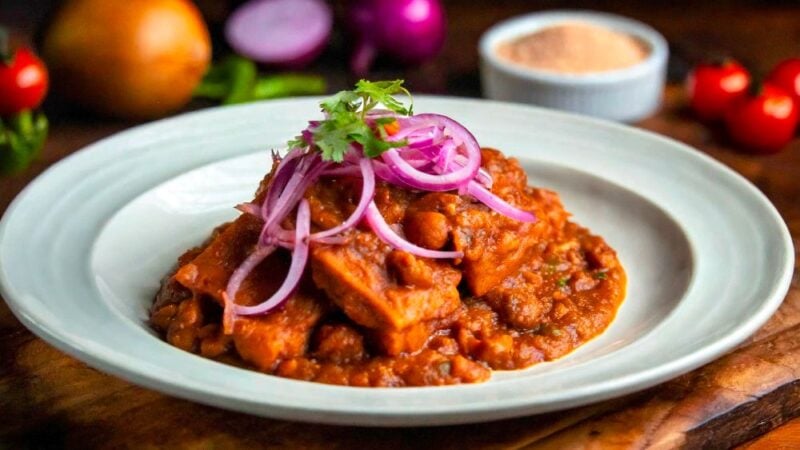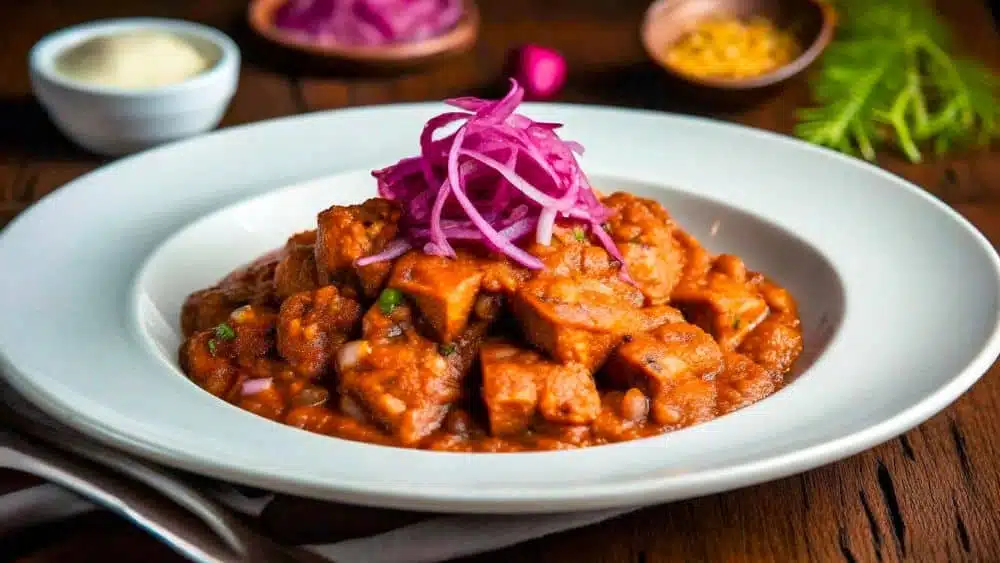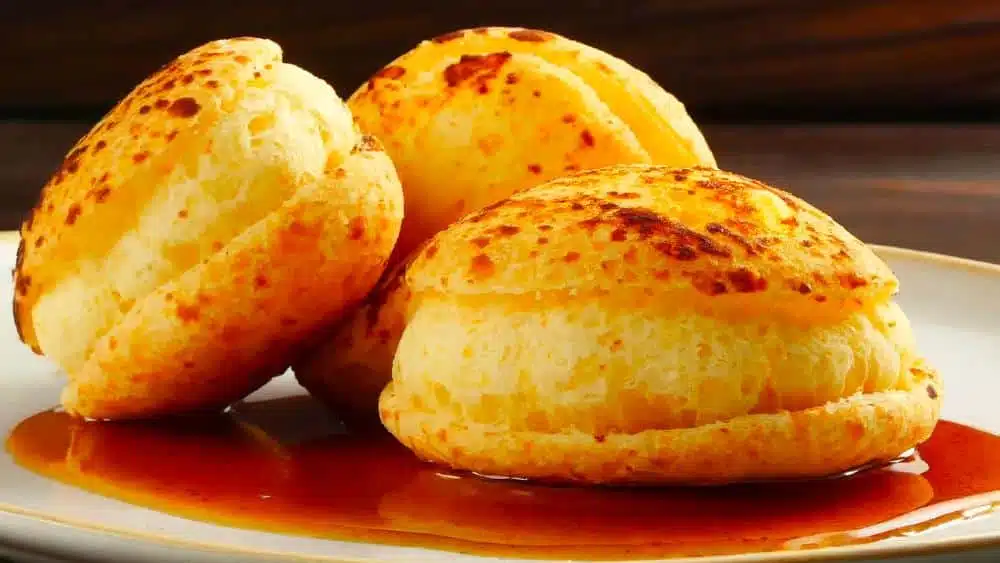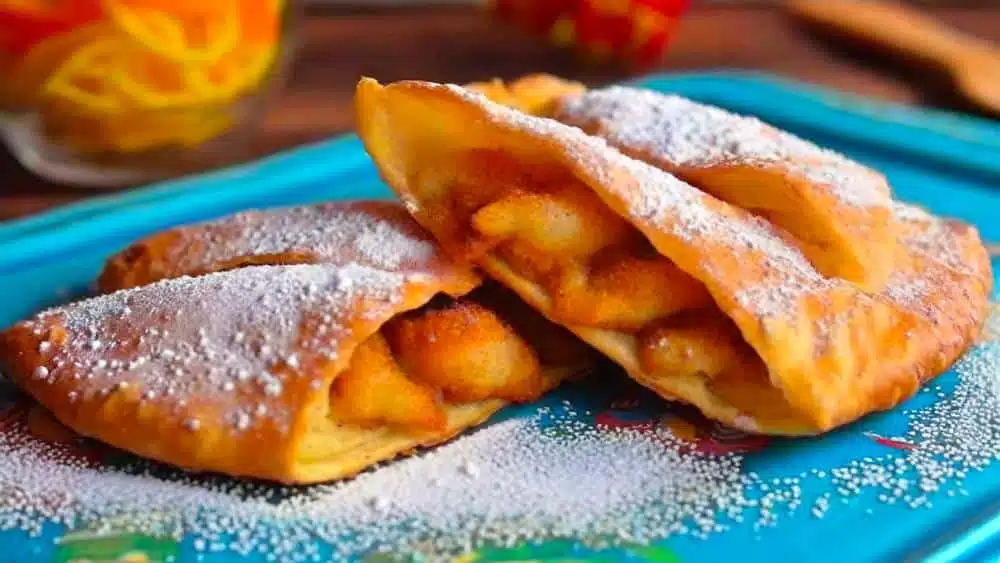Welcome friends of Paulina Kitchen , the meeting place of kitchen and food lovers. How beautiful are the old recipes! It's like finding a little in the history of the peoples in each bite.
Carapulcra has deep roots in Peru's pre -Columbian history and its preparation dates back to the ancient cultures that inhabited the Andean region . As usual, it was subsequently molded and modified for centuries and centuries of culinary and cultural influences.
Full of native ingredients, this recipe is a stew they have to do at home. The most important thing is to get the Peruvian Dry Pope who, as the name implies, is the characteristic of that country, the rest is patience and desire to obtain this tasty dish.
Content table
Knowing the carapulcra
Carapulcra is a traditional dish of Peruvian gastronomy that has its roots in the pre -Columbian era . It is a meat stew, usually pork or beef, accompanied by dehydrated potatoes and spices that give it its characteristic flavor.
It is especially popular in the southern region of Peru, being considered a true culinary treasure that stands out for its unique flavor and its cultural roots. Not only is it appreciated for its exquisite flavor, but also by its cultural importance.
It has been transmitted from generation to generation, being a fundamental part of festivities and celebrations in various communities in the Peruvian South. The preparation is often a social act, where families meet to share their knowledge and preserve this unique recipe.
Carapulcra recipe particularities
Carapulcra stands out for its thorough preparation and the use of native ingredients. The base of the dish is the dry potato , which is prepared in a special way to achieve the desired texture and flavor.
In addition, it is combined with meat, such as pork or beef, and season with a mixture of spices that can include panca, garlic, cumin and other aromatic herbs . The result is a thick and tasty stew that reflects the richness of the Peruvian culinary tradition.
It is an emblematic dish of the Peruvian culinary, enriched by a careful combination of ingredients and seasoning. Its cultural roots and its unmistakable flavor make it a gastronomic jewel that reflects the diversity and richness of Peruvian food .
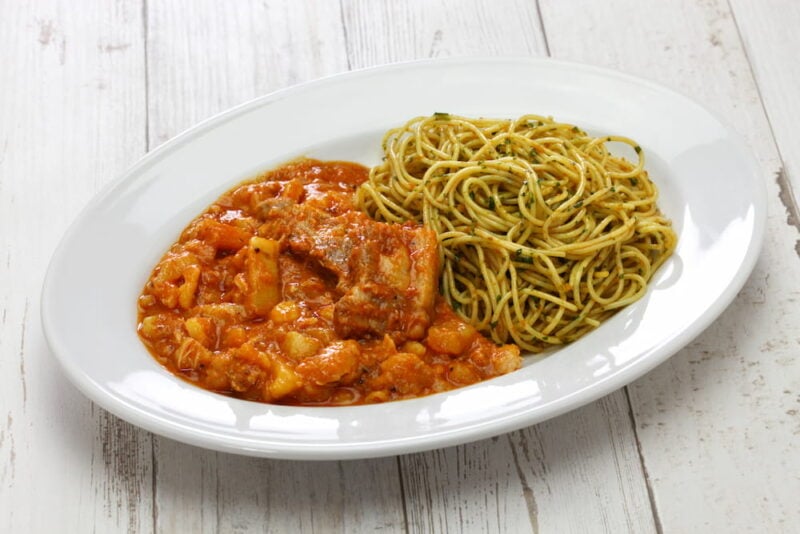
How this dish is prepared
The Carapulcra, a Peruvian dish rooted in the culinary tradition, is prepared with meticulousness and dedication. The base of this stew consists of dehydrated potatoes, which acquire a unique texture during their special preparation. It is combined with meat, usually pig or beef, and seasoned with spices such as panca chili , garlic and cumin, giving its bad taste.
Carapulcra preparation is a social and cultural process, transmitted from generation to generation, strengthening family and community ties . This dish stands out not only for its delicious result, but also for its cultural meaning, being an integral part of festivities and celebrations in the southern region of Peru. Thus represents the gastronomic wealth and cultural heritage of this South American country.
Peruvian Dry Pap
Peruvian Dry Pope, an essential ingredient in the traditional cuisine of the country, is the result of a fresh potato dehydration process . This conservation method has been used for centuries in the Andean regions, allowing the potatoes to be stored for long periods.
The dry potato has a firm texture and a concentrated flavor, offering a unique versatility in various culinary preparations. In addition to its role in typical dishes, the dry potato is appreciated for its ability to absorb flavors and provide special consistency to stews and soups.
The dry potato, essential in Carapulcra's recipe, brings not only its particular consistency, but also a concentrated flavor that merges with the characteristic spices of the dish, such as the panca chili, garlic and cumin.
Ancestral Origin of Carapulcra
It is a traditional Peruvian dish whose origins date back to pre -Columbian times . This stew has evolved over the centuries, being influenced by the diverse cultures that have left their mark in the Andean region.
Carapulcra incorporates native ingredients such as dry potato, evidencing the adaptability and creativity of local communities to take advantage of the available resources.
The Carapulcra recipe has been transmitted from generation to generation, consolidating itself as an essential component of the gastronomic identity of Peru. Instead of having a specific creator, it represents the culmination of ancestral culinary traditions that have endured over time.
A regional variant: Carapulcra Chicana
The Carapulcra Chinchana is a regional variant that finds its origin in the province of Chincha, located in the Ica region of Peru . This dish has been developed over the years in response to the cultural and culinary influences of the area. Chincha has historically been a melting pot of diverse cultures, including African and China, who have left their mark on local cuisine.
The Chinchana carapulcra is usually differentiated by its more intense flavor nuances, and by the incorporation of specific local ingredients. This variant stands out for its ability to reflect the cultural diversity of Chincha, becoming a culinary exponent that celebrates the rich inheritance of the region.
Follow on Instagram ( here )
and on YouTube that I upload new videos every week ( click here )
Carapulcra Peruvian Recipe
Yield : 4 portions
Preparation time : 2 hours
Ingredients
- 500 gr of pork or beef, cut into pieces
- 2 cups of dry, soaked and drained potatoes
- 2 tablespoons panca chili (chili paste)
- 4 garlic cloves, chopped
- 1 teaspoon of cumin
- 1 cup of meat broth
- 1 large onion, finely chopped
- 2 tablespoons of vegetable oil
- Salt and pepper to taste
Simple Carapulcra Preparation
- In a pot heat the oil over medium heat. Sauté the onion and garlic until browning. Add the meat and cook until it brown everywhere.
- Add the panca pepper, cumin, salt and pepper. Stir well. Incorporate dry potatoes and mix everything.
- Pour the meat broth and reduce the heat to low. Cook over low heat or until the potatoes are tender and the meat is well cooked.
- Adjust the seasoning to taste and serve hot.
